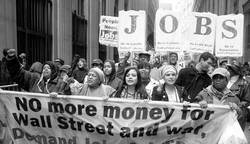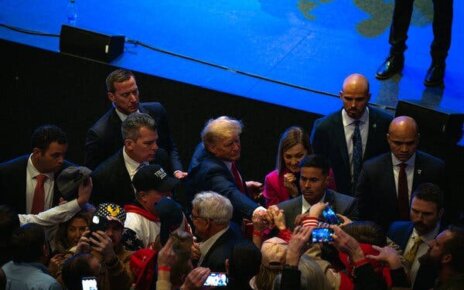An estimated 1000 citizens of New York City started occupying Wall Street and Zuccotti Park in protest of corporate greed and income inequality since September 17. The protests have continued to go strong, despite confrontations with police and attempts to institute new laws in occupied parks.
New York City is not the only location seeing these protests, with the movement spreading to cities nationwide including Trenton.
The movement has recently gone global as of October 15. Ireland, Rome and Tel Aviv, among other international cities have joined the protest.
The New York Occupy Wall Street website, occupywallst.org, explains the movement as a “leaderless resistance movement,” representing the “99 percent that will no longer tolerate the greed and corruption of the one percent.” The website and many protestors have eluded the inspiration of the movement to the Arab Spring.
Claude Taylor, a Communication professor at the University, described the movement as “an inevitable expression and appropriate voicing of financial concerns, and an expression of well-being.”
Why so many are participating in the movement, or at least showing their support, is still a question among the viewing public.
Dr. Joseph Patten, chair of the political science department, offered multiple reasons for the protests.
“It’s certainly a reaction to the state of our economy, and some leftover anger from the recent bailouts of the banks,” Dr. Patten said. “The timing is interesting in that it took some time to develop, which is why the lingering recession could have an impact as well.”
As the movement brings criticisms of big banks and corporations to the streets, the protests have faced their own critics. The movement has been called a misguided attack on those that rightfully earned their share, perpetuated by the Obama administration (and now George Soros, according to Yahoo News) with dirty hippies littering the streets.
Arielle Giordano, senior and captain of the Debate Hawks, finds the Occupy Wall Street protests “almost comedic.” Giordano also said the movement was started by “Adbusters, a Canadian activist group who is fighting consumerism.”
“Meanwhile, all the people who are protesting are under the spell of consumerism themselves,” Giordano said “They all are using their top of the line laptops, iPhones, and other high tech and recently released technology that they had to have to fight consumerism.”
There is no clear representation of demands from protestors, but Taylor said the movement is unguided.
“There are multiple issues people are concerned about. It doesn’t have to be single unified vision for social movement. Social movements rarely have a single vision,” he said.
“This idea in the mainstream media that there’s no point to the movement is a false dilemma,” said Taylor. “I don’t necessarily think that there has to be a unified point.”
Giordano said, “The protesters have no idea what they’re protesting about.”
She questioned why protestors are complaining about the top 10 percent of the country that pays the majority of the taxes.
“Protesters need to learn personal responsibility.” Giordano said. “If they don’t have a job or are unsuccessful they need to take a long hard look in the mirror.”
She said, “Wall Street hires your parents, it finances the factories and small businesses they work in, it manages the retirement accounts of your grandparents. The real problem is government. Make it smaller and limit its power.”
As the movement continues into Day 30, there is no end in sight. Taylor said, “It’s going to get bigger and more local. Don’t be surprised if there’s an Occupy Red Bank, or an Occupy Freehold. It’s going to be more violent, unfortunate to say, and it’s going to be uncomfortable for citizens to see other citizens get roughed up,” said Taylor.
“The movement is going to escalate to violence…because we haven’t found a way to talk to each other in a reasonable way,” he said.
PHOTO COURTESY of aangirfan.com




